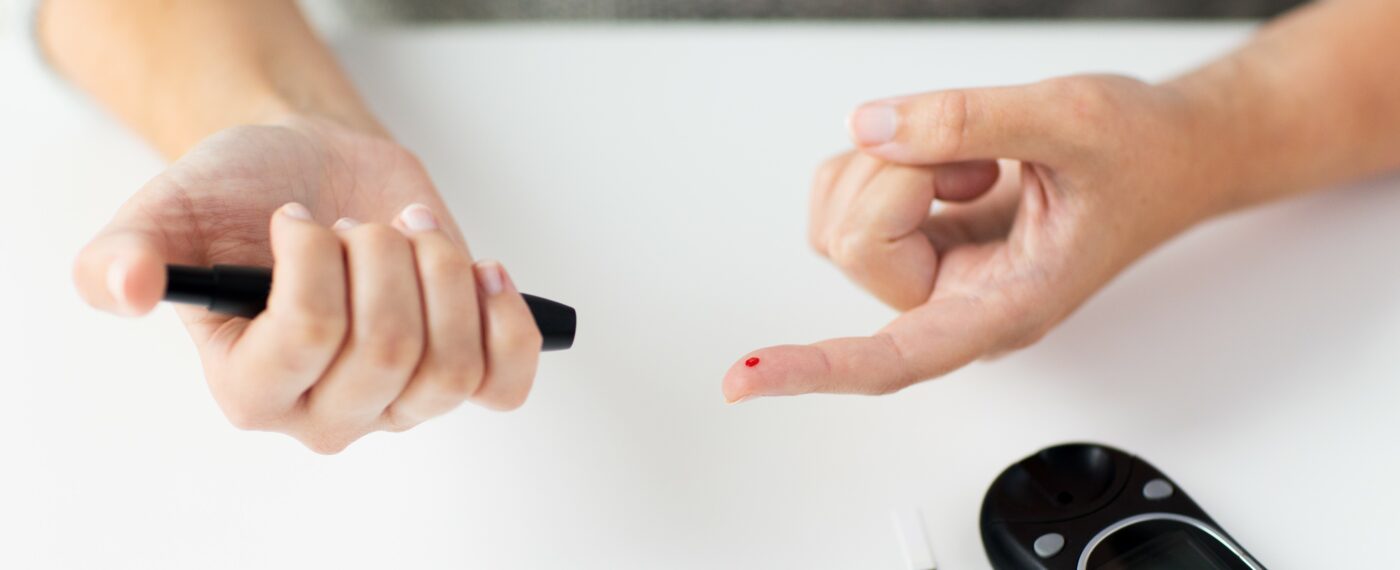本翻譯僅作學術交流用,無商業意圖,請勿轉載,如有疑議問請來信
研究發現,不正確的胰島素注射技術及其儲存方法與脂肪增生(LH)高度相關。患者中有42.9%出現LH,這與注射間隔不足和未輪換注射部位緊密相連。LH的存在還會增加嚴重低血糖的風險,強調了加強糖尿病患者注射教育的重要性。
胰島素治療管理的錯誤與脂肪增生的風險
Errors in insulin treatment management and risk of lipohypertrophy
Giuseppe Maria Pozzuoli, Mario Laudato, Maria Barone, Franco Crisci & Bianca Pozzuoli
Acta Diabetologica volume 55, pages67–73 (2018)Cite this article
https://link.springer.com/article/10.1007/s00592-017-1066-y
摘要
目的
脂肪增生(LH)是與胰島素治療相關的最常見皮膚相關併發症。我們的目的是估計胰島素治療患者中LH的盛行率,識別其與胰島素注射技巧和存儲的錯誤的關聯,以及LH、低血糖的風險和血糖控制之間的相關性。
方法
連續的T1DM或T2DM患者,在糖尿病診所進行常規診查時,接受了一份匿名問卷調查,以了解胰島素注射的方式、筆式設備的正確使用、胰島素存儲和低血糖發作的報告頻率。通過檢查和觸摸注射部位來評估LH的存在。
結果
總共納入了352名患者(平均年齡68 ± 12歲,男性佔43.2%,T2DM患者佔88.9%,胰島素治療平均持續時間9.1 ± 8.6年)。LH的盛行率為42.9%。在多變量分析中,與LH最強烈相關的因素是注射間隔不足(OR 20.4; 95% CI 10.5–39.6)和未輪換注射部位(OR 2.01; 95% CI 1.08–3.75)。胰島素劑量增加和胰島素治療持續時間較長也會增加LH的風險。LH的存在與嚴重低血糖的風險增加2.7倍相關。每日胰島素劑量較高、未輪換注射部位以及將正在使用的胰島素存放在冰箱中與較高的HbA1c水平相關。
結論
許多患者的胰島素注射技術不盡理想,強調了改善患者教育的必要性。增加對預防脂肪增生和胰島素注射錯誤重要性的認識,將有助於減少糖尿病的臨床、社會和經濟負擔。
Abstract
Aims
Lipohypertrophy (LH) represents the most common skin-related complication associated with insulin therapy. Our aim is to estimate the prevalence of LH among insulin-treated patients, to identify its association with errors in insulin injection technique and storage, and the correlation between LH, risk of hypoglycemia, and glycemic control.
Methods
Consecutive patients with T1DM or T2DM, attending a diabetes clinic for a routine visit, were administered an anonymous questionnaire investigating the modalities of insulin injection, the correct use of pen device, insulin storage, and reported frequency of hypoglycemic episodes. The presence of LH was assessed by inspection and palpation of injection sites.
Results
Overall, 352 patients were enrolled (mean age 68 ± 12 years, 43.2% males, 88.9% with T2DM, mean duration of insulin therapy 9.1 ± 8.6 years). The prevalence of LH was 42.9%. At multivariate analysis, the strongest correlates of LH were not spacing injections (OR 20.4; 95% CI 10.5–39.6) and not rotating the site of injection (OR 2.01; 95% CI 1.08–3.75). Increasing doses of insulin and longer duration of insulin therapy also increased the risk of LH. The presence of LH was associated with a 2.7 times higher risk of severe hypoglycemia. Higher daily insulin doses, lack of rotation of injection sites, and keeping insulin in use in the refrigerator were independent correlates of higher HbA1c levels.
Conclusions
Insulin injection technique is suboptimal in many patients, highlighting the need for improved patient education. Increasing the awareness of the importance of preventing lipohypertrophy and insulin injection errors represents an important tool to reduce the clinical, social, and economic burden of diabetes.
參考文獻
-
Gentile S, Strollo F, Ceriello A, AMD-OSDI Injection Technique Study Group (2016) Lipohypertrophy in insulin-treated subjects and other injection-site skin reactions: Are we sure everything is clear? Diabetes Ther 7:401–409
-
Spollett G, Edelman SV, Mehner P, Walter C, Penfornis A (2016) Improvement of insulin injection technique: examination of current issues and recommendations. Diabetes Educ 42:379–394
-
De Coninck C, Frid A, Gaspar R et al (2010) Results and analysis of the 2008–2009 Insulin Injection Technique Questionnaire survey. J Diabetes 2:168–179
-
Johansson UB, Amsberg S, Hannerz L et al (2005) Impaired absorption of insulin aspart from lipohypertrophic injection sites. Diabetes Care 28:2025–2027
-
Vardar B, Kizilci S (2007) Incidence of lipohypertrophy in diabetic patients and a study of influencing factors. Diabetes Res Clin Pract 77:231–236
-
Blanco M, Hernández MT, Strauss KW, Amaya M (2013) Prevalence and risk factors of lipohypertrophy in insulin-injecting patients with diabetes. Diabetes Metab 39:445–453
-
Holstein A, Stege H, Kovacs P (2010) Lipoatrophy associated with the use of insulin analogues: a new case associated with the use of insulin glargine and review of the literature. Expert Opin Drug Saf 9:225–231
-
Famulla S, Hövelmann U, Fischer A et al (2016) Insulin injection into lipohypertrophic tissue: blunted and more variable insulin absorption and action and impaired postprandial glucose control. Diabetes Care 39:1486–1492
-
Frid AH, Kreugel G, Grassi G et al (2016) New insulin delivery recommendations. Mayo Clin Proc 91:1231–1255
-
AMD-OSDI-SID—Raccomandazioni per una corretta tecnica iniettiva e per la prevenzione delle lipodistrofie e del rischio di punture accidentali a cura di un tavolo di lavoro di esperti AMD-OSDI-SID. http://www.aemmedi.it/files/Linee-Guida_Raccomandazioni/2015/ Documento_di_consenso_2015.pdf
-
Associazione Medici Diabetologi (AMD)—Società Italiana di Diabetologia (SID); Standard italiani per la cura del diabete mellito 2016 http://www.standarditaliani.it/skin/www.standarditaliani.it/pdf/STANDARD_2016_June20.pdf
-
Gentile S, Strollo F, Guarino G et al (2016) Factors hindering correct identification of unapparent lipohypertrophy. J Diabetes Metab Disord 3:00065
-
Gentile S, Guarino G, Giancaterini A, Guida P, Strollo F, AMD-OSDI Italian Injection Technique Study Group (2016) A suitable palpation technique allows to identify skin lipohypertrophic lesions in insulin-treated people with diabetes. Springerplus 5:563
-
Grassi G, Scuntero P, Trepiccioni R, Marubbi F, Strauss K (2014) Optimizing insulin injection technique and its effect on blood glucose control. J Clin Transl Endocrinol 1:145–150
-
Strauss K, De Gols H, Hannet I, Partanen TM, Frid A (2002) A pan-European epidemiologic study of insulin injection technique in patients with diabetes. Pract Diabetes Int 19:71–76
-
Berard L, Cameron B (2015) Injection technique practices in a population of Canadians with diabetes: results from a recent patient/diabetes educator survey. Can J Diabetes 39:146–151
-
Ji J, Lou Q (2014) Insulin pen injection technique survey in patients with type 2 diabetes in mainland China in 2010. Curr Med Res Opin 30:1087–1093
-
Mitchell VD, Porter K, Beatty SJ (2012) Administration technique and storage of disposable insulin pens reported by patients with diabetes. Diabetes Educ 38:651–658
-
Strollo F, Guarino G, Armentano V et al (2016) Unexplained hypoglycaemia and large glycaemic variability: skin lipohypertrophy as a predictive sign. Diabetes Res Open J 2:24–32



 English
English Bahasa Melayu
Bahasa Melayu Bahasa Indonesia
Bahasa Indonesia Tiếng Việt
Tiếng Việt ไทย
ไทย